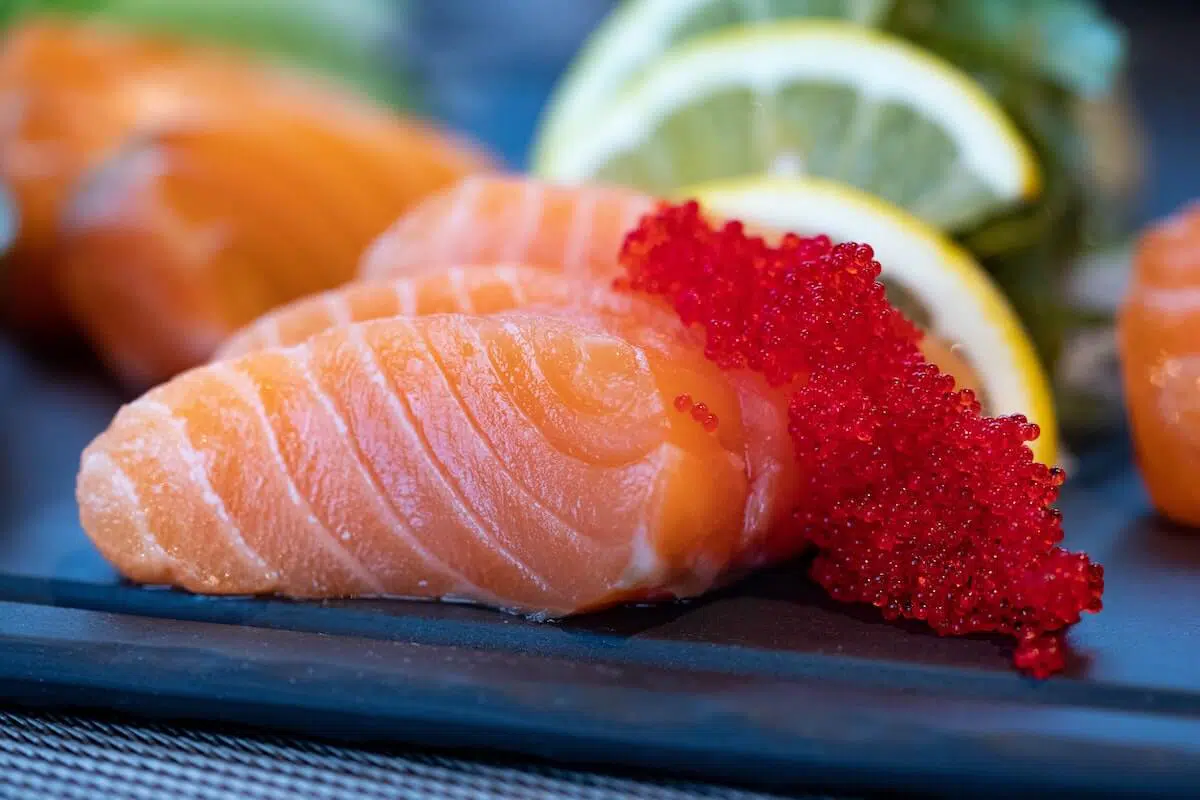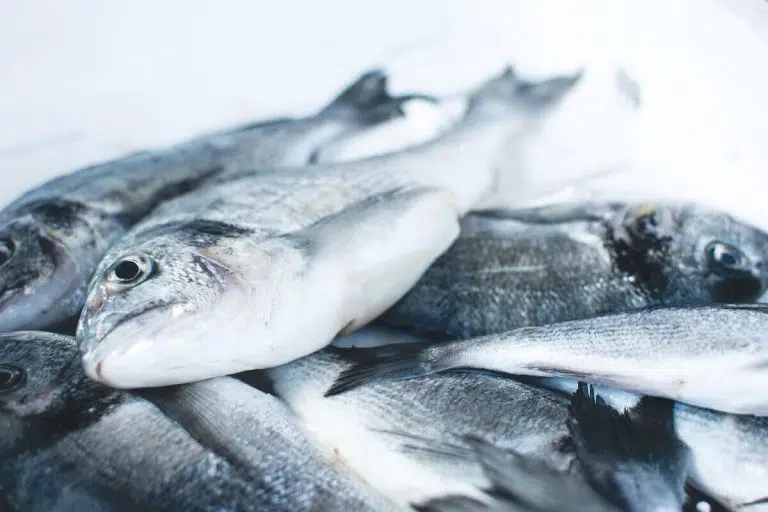Many first timers wonder, “is sashimi healthy?” when staring at a few cuts of raw fish. There are not many animal products that can be eaten raw, so it’s no surprise that people question how the raw fish might affect their health.
When bought from reputable sources, sashimi is a healthy and safe option that features lots of protein, healthy fats, minerals and vitamins, and is a relatively low calorie food.

Photo by Olivier Bergeron on Unsplash
So how healthy is sashimi?
Compared to other meats, such as chicken and pork, fish usually has a lower health risk. However it all depends on how and where the fish was caught, what type of fish it is, and how fresh the fish is. As with most things, eating sashimi in moderation is also key to limiting exposure to most of the potentially negative traits.
First, it’s important to note how the fish was caught. Seafood that is caught for the purpose of sushi-grade sashimi is caught with the use of a hand-line and not a net. Fish that are caught in the ocean are killed immediately and iced immediately as well. This extends the fish’s shelf life and keeps the fish fresher for longer.

Photo by Marine Dumay on Unsplash.
Sashimi health benefits
Assuming your eating good quality fish, sashimi has four main health benefits:
1. Sashimi is rich in protein
Protein is a very important nutrient for wound healing, tissue repair, and muscle growth. Research shows us that when you eat more protein-rich foods like sashimi, you support appetite control and you experience reduced food cravings. Additionally, protein from fish is ‘complete.’ This means that sashimi contains all nine essential amino acids in sufficient concentrations.
2. Lots of omega-3 fatty acids in sashimi
Sashimi is also a great source of healthy fats such as omega-3 fatty acids, which promote heart health and regulate inflammation. According to WebMD, “eating at least two servings a week of fish, particularly fish that’s rich in omega-3 fatty acids, appears to reduce the risk of heart disease, particularly sudden cardiac death.”
3. Relatively low calories in sashimi (no rice)
On average, you’ll find that most fish used in sashimi has about 30 to 40 calories (for a one ounce slice of fish). If you’re on a diet, sashimi is definitely lower calorie option that nigiri or maki sushi. And if you’re wondering what’s the lowest calorie option on the sushi menu, it’s usually salmon roe (around 21 calories, 3g of protein and 1g of fat).
4. Sashimi is rich in essential minerals and vitamins
Generally speaking, most fish supplies plenty of minerals and vitamins, supplying quite a few nutrients to your diet. Considering the nutritional profiles of healthy fish such as tuna, mackerel, salmon sashimi, and roe, it can be seen that sashimi offers good and even high amounts of vitamin B, selenium, magnesium, and vitamin D.
The risks of sashimi
Is sashimi healthy if you have seafood allergies?
According to research, in the USA, an estimated 2.3% of the population has had a seafood allergy. They described symptoms as cramps, abdominal pain, nausea, and dizziness. In severe cases, anaphylaxis occurred.
If the above symptoms happen to you, and you have eaten seafood, you should consult with your doctor before you try eating sashimi. And the allergies won’t just occur from eating raw fish, but cooked fish as well.
Contaminants and pollutants
Unfortunately, some of the seafood you eat might contain high amounts of heavy metals such as mercury. Fish such as swordfish and tuna which are used for sashimi, happen to be particularly high in methylmercury.
One study demonstrated this: Just one piece of tuna sashimi contained more mercury in it than the human toleration level for adults. Ouch!
On the other hand, there is some fish that is used for sashimi that does contain lower amounts of mercury in them. They are trout, shrimp, and salmon. When considering which fish to buy, think of the Four S Rule and make your selection.
Conclusion
Overall, sashimi is healthy for most people, as long as you understand what you’re ordering and where it comes from. Make sure to ask questions about how the fish is sourced. For example, (sustainably sourced) salmon sashimi is healthy — just don’t overdo it.
For more information, here are additional resources:
- https://www.ncbi.nlm.nih.gov/pmc/articles/PMC6179508/
- https://pubmed.ncbi.nlm.nih.gov/15241360/
- https://pubmed.ncbi.nlm.nih.gov/28272991/
Frequently Asked Questions
Is salmon sashimi healthy?
Salmon sashimi is a protein-rich and healthy seafood dish with good fats (just make sure it’s fresh and from a good cut of fish). A standard 1 ounce (28g) slice of salmon sashimi has 59 calories, 3.8g of fat, 16mg of cholesterol, 0g of carbohydrates, and 5.8g of protein.
Is tuna sashimi healthy?
Tuna sashimi is a relatively healthy low-calorie seafood dish that’s lean and loaded with protein (however, eat tuna in moderation, as it can have higher than average mercury levels). A standard 1 ounce (28g) slice of tuna sashimi has 31 calories, 0.1g of fat, 11mg of cholesterol, 0g of carbohydrates, and 6.9g of protein.
Andre Alexander
Andre tried sushi when he was 12 and was hooked. He studied Japanese in high school and was good enough to earn a free trip to Japan… unsurprisingly, he remembers none of it decades later! As a diving enthusiast, he has a deep appreciation for marine life and sustainability efforts.






